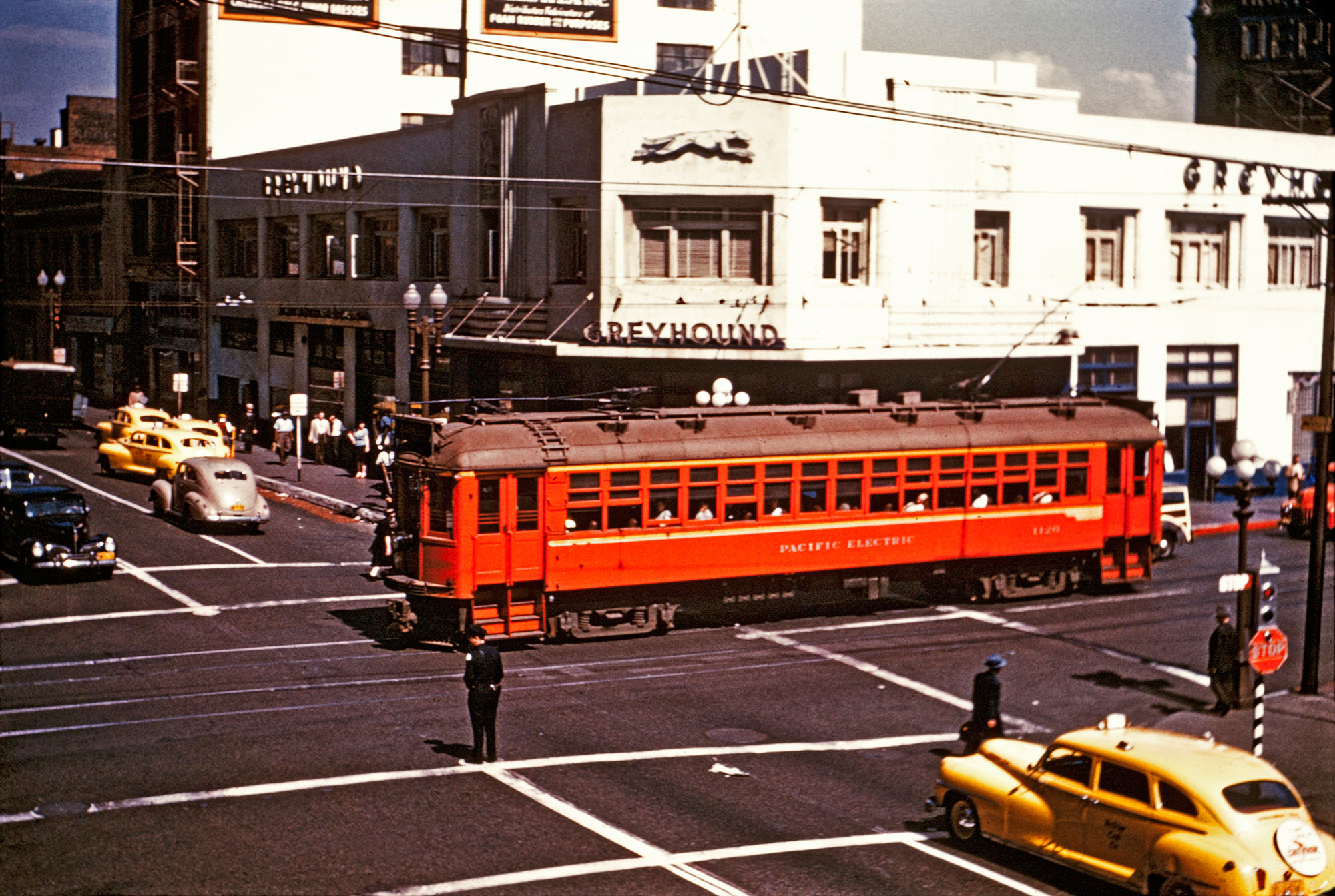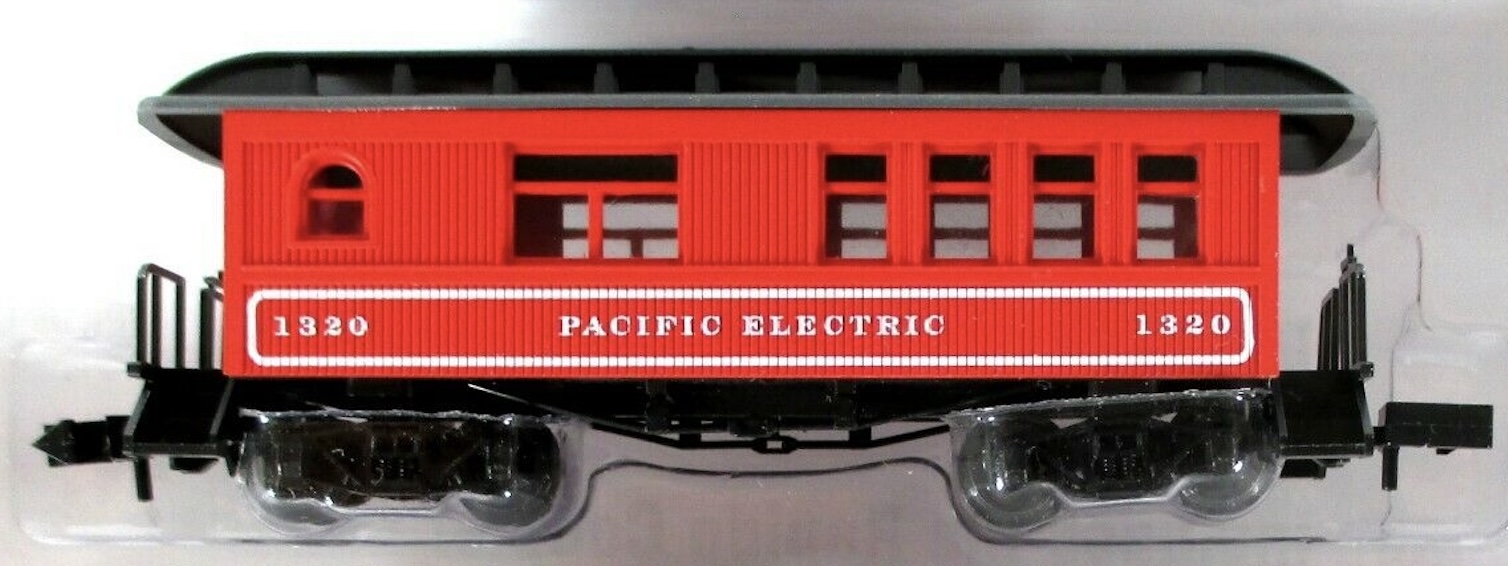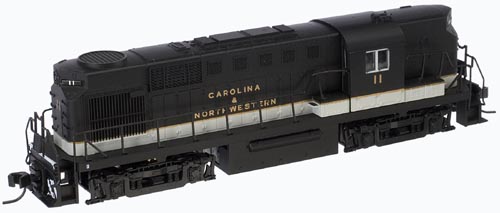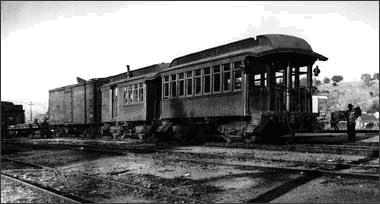Prototype History: The Sierra Railway contracted with the Overton company to produce combine and coach sets used only on the Angels Camp branch where the short switchback tails limited the car length. 2-3 sets of the cars were built, in the early 1900s. Overton passenger cars are short, open platform, truss-rod cars with clerestory windows. It was natural to design the clerestory over the passenger compartment only, without continuing it over the end platforms, as there was no need for light and ventilation on the open platforms; however, it was soon found to be easier to build a full length clerestory without a complex joint at the ends. The clerestory actually weakened the structure of the car, as well as adding top-weight and cost. As far as we can tell, 'Overton' has become a sort-of generic term for early passenger cars with the above features.
Road Name History:  The PE was established in 1901 and built an electric interurban line between Los Angeles and Long Beach, California. With this first line completed in 1902, the PE began building outward in every direction. This caught the attention of Southern Pacific who at first attempted to obstruct the PE’s expansion and then bought a 45% stake in the company. Henry Huntington, PE’s founder, then established a new company, the Los Angeles Inter-Urban Railway and resumed his expansion under that flag – outside of the influence of the SP. By 1908, LAI-U had grown larger than PE but Huntington had come to a truce with Southern Pacific. He leased the LAI-U to Pacific Electric and over the next few years sold control of his various traction lines in the state to SP. In 1911, the PE, LAI-U, Los Angeles Pacific and a handful of smaller lines were combined into a greater Pacific Electric.
The PE was established in 1901 and built an electric interurban line between Los Angeles and Long Beach, California. With this first line completed in 1902, the PE began building outward in every direction. This caught the attention of Southern Pacific who at first attempted to obstruct the PE’s expansion and then bought a 45% stake in the company. Henry Huntington, PE’s founder, then established a new company, the Los Angeles Inter-Urban Railway and resumed his expansion under that flag – outside of the influence of the SP. By 1908, LAI-U had grown larger than PE but Huntington had come to a truce with Southern Pacific. He leased the LAI-U to Pacific Electric and over the next few years sold control of his various traction lines in the state to SP. In 1911, the PE, LAI-U, Los Angeles Pacific and a handful of smaller lines were combined into a greater Pacific Electric.
The new PE blanketed Southern California from San Fernando and Pasadena to the north, Santa Monica, Redondo Beach, San Pedro, Long Beach, Huntington Beach and Balboa along the coast to as far east as Redlands. With 575 miles of line, they were the largest electric railway in the world at the time of the consolidation.
Near the end of the Second World War, PE rostered 483 electric passenger cars ranging from small street cars to large interurban cars, 41 box motors for package freight, a trio of RPO-Express cars, and for heavy freight service 44 electric freight motors, 19 steam locomotives, and 6 diesels (some of which were equipped with trolley poles to trigger PE’s signal system.)
As the popularity of the automobile increased, PE began abandoning lines. In a few cases, lines that were making money were forced into abandonment to make room for new highways. In 1953, the remaining passenger service was sold to Metropolitan Coach Lines. PE continued on as a freight railroad. The freight operations were gradually dieselized with power leased from SP with the last electric freight motor switching customers along Santa Monica Boulevard in January of 1958. In 1965, Pacific Electric Railway was finally merged into parent Southern Pacific.

The new PE blanketed Southern California from San Fernando and Pasadena to the north, Santa Monica, Redondo Beach, San Pedro, Long Beach, Huntington Beach and Balboa along the coast to as far east as Redlands. With 575 miles of line, they were the largest electric railway in the world at the time of the consolidation.
Near the end of the Second World War, PE rostered 483 electric passenger cars ranging from small street cars to large interurban cars, 41 box motors for package freight, a trio of RPO-Express cars, and for heavy freight service 44 electric freight motors, 19 steam locomotives, and 6 diesels (some of which were equipped with trolley poles to trigger PE’s signal system.)
As the popularity of the automobile increased, PE began abandoning lines. In a few cases, lines that were making money were forced into abandonment to make room for new highways. In 1953, the remaining passenger service was sold to Metropolitan Coach Lines. PE continued on as a freight railroad. The freight operations were gradually dieselized with power leased from SP with the last electric freight motor switching customers along Santa Monica Boulevard in January of 1958. In 1965, Pacific Electric Railway was finally merged into parent Southern Pacific.
Brand/Importer Information:  MDC Roundhouse was founded in California in 1938 and relocated in 1993 to Carson City, Nevada due to statewide restrictions on painting. MDC Roundhouse was a producer of both RTR (Ready-to-Run) and kit versions of N Scale rolling stock as well as RTR locomotives. They entered the N scale market in 1979 with a Thrall Hi-Side Gondola and a Hi-Cube Single Door Box Car. MDC Roundhouse was purchased by Horizon Hobbies in June of 2004, when its owner since 1938 C. H. Menteer retired, and merged into their Athearn line.
MDC Roundhouse was founded in California in 1938 and relocated in 1993 to Carson City, Nevada due to statewide restrictions on painting. MDC Roundhouse was a producer of both RTR (Ready-to-Run) and kit versions of N Scale rolling stock as well as RTR locomotives. They entered the N scale market in 1979 with a Thrall Hi-Side Gondola and a Hi-Cube Single Door Box Car. MDC Roundhouse was purchased by Horizon Hobbies in June of 2004, when its owner since 1938 C. H. Menteer retired, and merged into their Athearn line.
Unlike many of their contemporaries which contracted with European firms to produce their products, MDC made their own toolings. They made several popular body styles and produced them for road names that many other vendors (even Micro-Trains) wouldn't touch. This made them popular with modelers. Also, their un-assembled "kits" permitted a lower price point so they were popular with "runners" as well as "modelers".
Of particular interest was the attention given to modern 50 foot steel boxcars. They made some attempt to accurately mold the differences into distinct models to represent each of the major prototype manufacturers products. They have distinct toolings not only for the different products from FMC, BFF and PS, but also multiple models for each of these manufacturers including "standard" vs "Youngstown" doors and "waffle" vs. "rib" sides. In total they produced 13 different versions of the 50 foot steel boxcar.

Unlike many of their contemporaries which contracted with European firms to produce their products, MDC made their own toolings. They made several popular body styles and produced them for road names that many other vendors (even Micro-Trains) wouldn't touch. This made them popular with modelers. Also, their un-assembled "kits" permitted a lower price point so they were popular with "runners" as well as "modelers".
Of particular interest was the attention given to modern 50 foot steel boxcars. They made some attempt to accurately mold the differences into distinct models to represent each of the major prototype manufacturers products. They have distinct toolings not only for the different products from FMC, BFF and PS, but also multiple models for each of these manufacturers including "standard" vs "Youngstown" doors and "waffle" vs. "rib" sides. In total they produced 13 different versions of the 50 foot steel boxcar.
Item created by: CNW400 on 2021-09-06 10:52:59
If you see errors or missing data in this entry, please feel free to log in and edit it. Anyone with a Gmail account can log in instantly.
If you see errors or missing data in this entry, please feel free to log in and edit it. Anyone with a Gmail account can log in instantly.









